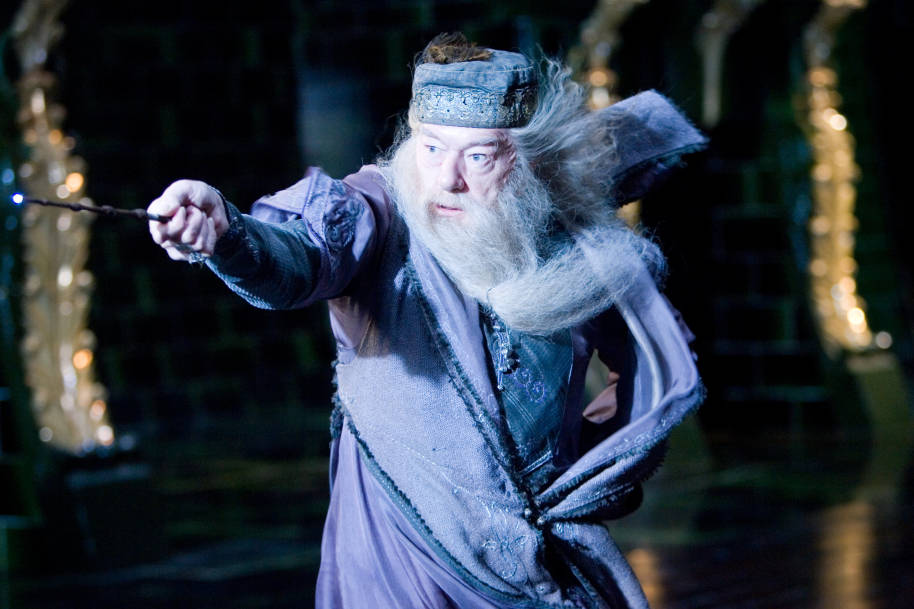
Magic, by its very nature, is difficult. That’s why witches and wizards go to Hogwarts – to learn how to control it. But there are certain spells that go beyond the capabilities of the average wizard; that require more than just knowing how to perform magic, but how to master it.
Here are some of the toughest…
Apparition and Disapparition
Apparition – the magical form of teleportation – is not the spell of masters. In fact, it’s a fairly common sight in the world of Harry Potter. But it is a spell that’s notoriously tricky to get right, and particularly bloody if it goes wrong. Hence why, to Apparate and Disapparate, wizards need to be over 17 and have a licence from the Department of Magical Transportation, which requires them to pass a test. Similar to Muggles and driving tests, but with slightly more chance of leaving your legs at home.

Apparition is so tricky because it requires a high level of mental skill – a level that most wizards, especially kids, are not capable of. When teaching Harry’s class in Harry Potter and the Half-Blood Prince, Apparition Instructor Wilkie Twycross described the spell as consisting of three Ds: ‘Destination, Determination and Deliberation’. This, as you can imagine, leads to some wizards having their minds in two places at once, which usually ends in Splinching – having body parts in two places at once, as Ron gruesomely demonstrated in Deathly Hallows.
Non-verbal spells and wandless magic
As already established, magic is a difficult thing. But for difficulty level extreme, you need to go silent, or even hands-free.
Non-verbal spells are those typically performed with a wand, but without saying the incantation out loud. The advantage, according to Professor Snape, is that ‘those who progress to using magic without shouting incantations gain an element of surprise in their spell-casting’. But it’s a feat that requires enormous ‘concentration and mind power’, with the spell-caster having to summon the spell in their mind, rather than out loud. It’s the difference between learning the alphabet, and having to read War and Peace – the students of Hogwarts experience it in their sixth year, when they’re expected to perform only non-verbal spells from then on.

Even harder than that, however, is wandless magic. To perform magic without a wand is beyond most wizards. As much like fire, magic can be raging, chaotic and volatile – that’s why wizards use wands to channel it – and requires the utmost skill and discipline to control. Wandless magic is like riding a bike with no hands. During an earthquake.
Patronus Charm
To cast the Patronus Charm successfully, the wizard casting it must concentrate, with all their might, on the happiest memory they have: it’s fuel for the Patronus, which is a projection of positive energy. They must then draw circles with their wand, and say the incantation ‘Expecto Patronum’. If it works, then there are two forms of Patronus that can be cast. A non-corporeal one, which is just a burst of silver light from the wand; or a fully formed corporeal guardian, taking the shape of the animal that best reflects the caster’s personality.

To cast either is an achievement, although the latter is so difficult as to be considered unusual. This is because very few wizards possess the skill to concentrate on both the spell and their emotions. Even so, Harry Potter was able to master the spell in his own time at Hogwarts – making him one of the youngest wizards to do so – and he even taught it to members of Dumbledore’s Army, way beyond their years.
Occlumency
A spell that Harry certainly did not master during his time at Hogwarts was Occlumency, the obscure and ancient art of closing your mind against Legilimens, those who intrude upon other people’s minds. In terms of difficulty, it is probably on the same level as the Patronus Charm, but both demand very different disciplines, one which Harry excelled at, and one he just couldn’t nail.
Because while the Patronus Charm requires you to embrace emotion, Occlumency requires you to empty yourself of it – to clear your mind. Only then will you be able to prevent a Legilimens from discovering any feeling or thought, because there are no feelings or thoughts to discover.

So Occlumency requires a certain type of mentality to work. This is why Draco Malfoy, who had to use Occlumency to hide his plan to kill Dumbledore in Harry Potter and the Half-Blood Prince, excelled where Harry had failed.
In an interview in 2005, J.K. Rowling even confirmed as much: ‘I think Draco would be very gifted in Occlumency,’ she said, ‘unlike Harry. Harry’s problem with it was always that his emotions were too near the surface and that he is in some ways too damaged. But he’s also very in touch with his feelings about what’s happened to him. He’s not repressed, he’s quite honest about facing them, and he couldn’t suppress them, he couldn’t suppress these memories. But I thought of Draco as someone who is very capable of compartmentalising his life and his emotions, and always has done.’
Flight
If Lord Voldemort wasn’t one of the most evil wizards the wizarding world has ever known, then he would surely be remembered as one of its most brilliant. Case in point: he achieved what was long thought to be a magical impossibility, and invented a spell that allows the user to fly. Not levitate, not ride a broom, but fly unaided high among the clouds. How incredible is that? It’s just a shame that his first public display of it was an attempt to kill Harry.

It happened during the chapter ‘The Seven Potters’, when the Order of the Phoenix were trying to move Harry to a safe location, but were attacked on the way.
And then Harry saw him. Voldemort was flying like smoke on the wind, without broomstick or Thestral to hold him, his snake-like face gleaming out of the blackness, his white fingers raising his wand again.
Harry Potter and the Deathly Hallows
Given that only Voldemort could perform it, there’s no way of knowing for sure how difficult flying is. But given that he was the first wizard in all of history to create such a spell, it’s safe to assume that Madam Hooch has nothing to worry about.
Creating a Horcrux
And so we arrive at creating a Horcrux, one of the – if not the – most difficult and extreme pieces of magic the wizarding world has to offer, for various reasons.
A Horcrux is created when a wizard takes an object and binds a piece of their soul to it. The purpose is immortality, with the logic going that as long as a piece of your soul survives within the object, then you can never truly die. It’s magic so Dark, so heinous, that it was kept a secret from most of the wizarding world. Yet despite many trying, there are only two known wizards to have discovered how to perform it: an Ancient Greek Dark wizard called Herpo the Foul, who created one Horcrux; and Voldemort, who mastered the spell and created seven. Again, as with flight, it’s an example of how Tom Riddle’s exceptional talents were twisted into evil.

The actual process of creating a Horcrux is unknown; according to J.K. Rowling, it involves a spell and a ‘series of things you would have to do’ that are ‘too horrible’ to say out loud. What we do know, however, is how to split a soul – murder. According to Horace Slughorn, murder is, ‘the supreme act of evil... Killing rips the soul apart. The wizard intent upon creating a Horcrux would use the damage to his advantage: he would then encase the torn portion.’
As with the Unforgivable Curses, the difficulty of splitting your soul depends upon what kind of person you are – on how easy you would find it to kill.
But then, beyond splitting your soul, beyond the mysterious process of welding a piece of it on to an object, there’s also the matter of simply existing. For to split your soul means to have less of a soul to live with. By splitting his into seven parts, the remnant of Voldemort’s soul was said to have become unstable – which is part of the reason why it finally broke apart when he tried to murder baby Harry in Godric’s Hollow. What followed next was the toughest part of creating a Horcrux – the physical body being destroyed. You live on, you see, but in a non-corporeal form. Voldemort described it in Harry Potter and the Goblet of Fire: ‘I was ripped from my body, I was less than spirit, less than the meanest ghost… but still, I was alive.’
As Professor Slughorn once said, ‘Death would be preferable.’

